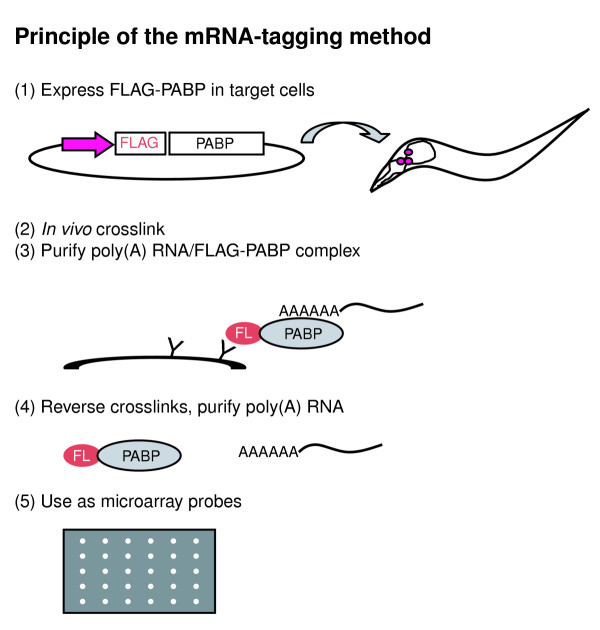<<< Previous page | | Next page >>>
Analysis of cell-specific gene expressions in the nervous system
Neurons, composed of cell bodies and neurites, play common roles in transmitting signals to other neurons or muscle cells in animals. However, individual neurons have specific functions and morphology. In the nematode C. elegans, all neurons are identified and all genes are annotated based on genomic sequences. Because the characteristics of individual neurons are believed to be defined by the gene group expressed in the neurons, C. elegans is suitable for studying the genetic traits of individual neurons.
We developed the poly(A) pull-down / mRNA tagging method to investigate the various traits of individual neurons by the genome-wide analysis. This method allows isolation of the mRNAs of the target cells in which PABP (poly(A) binding protein) is expressed in a cell-type-specific manner. PABP binds to the poly(A) tail of all mRNAs. By expressing the epitope-tagged PABP using a cell-type specific promoter, the mRNAs of the target cells are extracted by co-immunoprecipitation. This poly(A) pull-down method and microarray enable us to comprehensively identify the genes expressed specifically in the cells or organs (illustration below).

We confirmed that the sensory neurons of C. elegans are available for this method. Our research indicated that the poly(A) pull-down method allows for isolating the genes enriched or specifically expressed in sensory neurons and leads us to identify many novel genes.
Our previous experiments showed that this method enables us to examine genes expressed in 50 cells in each animal. We were also able to apply this method to single cell analyses. At the same time, we also were able to identify the cis elements and other regulatory factors by using bioinformatics.